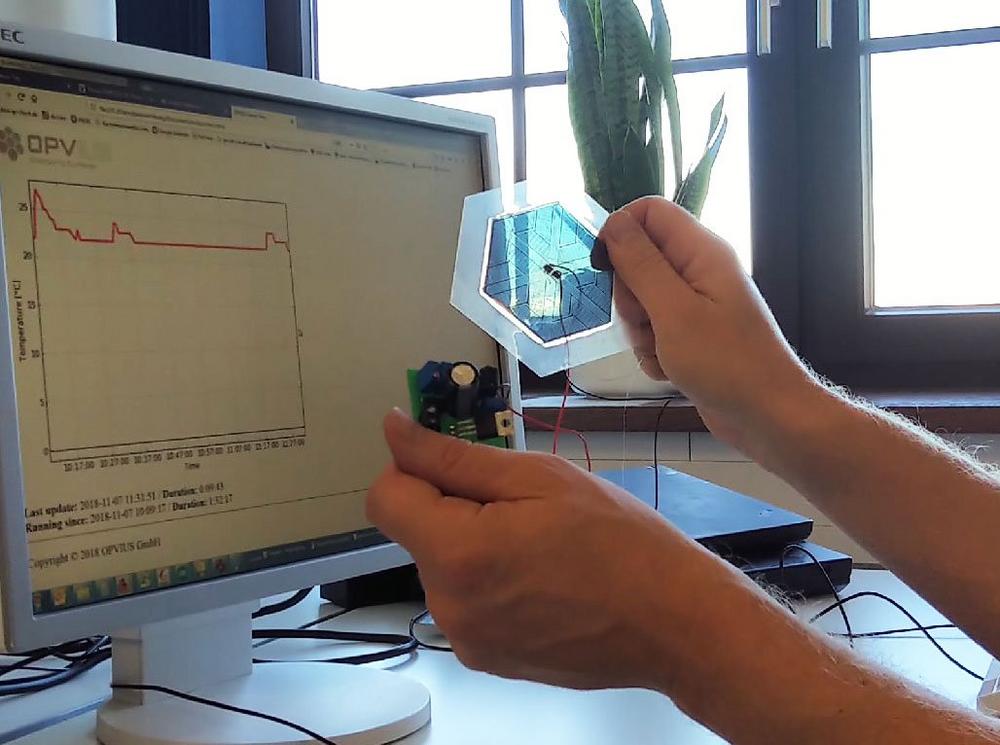Today’s world is full of information and communication technologies. Society demands the support of the Internet in any conceivable everyday situation. In order to meet the demand and offer additional services, physical objects are integrated into the Internet, thus extending the digital world into the real world. Many everyday actions today involve technical support. In this context, we often hear the catchword: Internet of Things (IoT).
The IoT doesn’t just change everyday life for the individual, but also companies and the nature of their work are affected. In general, it is necessary to recognize and understand patterns in complex systems. Sensors and actuators are being used to communicate with a parent system and exchange data and results or trigger events. All this requires energy. According to today’s state of the art, batteries are the means of choice to ensure the supply of these nodes. This, however, has an impact both on the environmental balance and maintenance costs. Although the unit costs of the batteries may be low, their replacement is expensive.
OPVIUS offers an individual platform for this development, which can be adapted and integrated to customer requirements. The company managed to significantly improve the low-light performance of OPV modules back in March this year. Now a further step has been taken towards functional IoT systems: Integration into an OPV-supported power unit that can supply sensors and wireless communication.
The improved OPV performance in the low light range means that it can even be used in extremely low lighting conditions. Depending on the system design, stable operating conditions are already possible in lighting conditions from 100 lux, i.e. significantly lower than in the case of classic office lighting. An OPV surface the size of a business card is sufficient for this purpose.
In the first step, a classic 433MHz transmitter/receiver system was set up. The developed platform allows the integration into almost every commercial sensor and transmission standard. These developments are paired with the optical adaptability of the OPVIUS components. This integration ensures power supply and provides for optical acceptance.
Dr. Pavel Schilinsky, Senior Manager of System Development at OPVIUS, added: "We have paid particular attention to energy management in order to enable long-term, permanent operation. Among other things, a mechanism has been integrated, which automatically wakes up the sensor after shading." He adds: "This will enable the OPV to become the enabler of the IoT. Coupled with the aesthetic integration possibilities, we can enable the IoT to achieve long-term market penetration into the user’s personal environment."
OPVIUS GmbH, founded in 2012 and located in Nuremberg and Kitzingen (INNOPARK Kitzingen), is among the world leaders in the field of organic photovoltaics. OPVIUS produces organic solar cells with a focus on client-specific solutions. In addition, the company is also active in the field of research and development, in order to continue to provide its clients with creative and innovative solutions. In this regard, OPVIUS uses a unique production process, combining printing, lamination, and laser techniques. This advanced technology is easily scalable and allows the production of the utmost individual, customer-specific designs. OPVIUS also helps clients with system solutions in order to integrate OPVs into already existing or new products.
OPVIUS is part of the HOCH.REIN GROUP, an international, medium-sized investment holding with the aim to promote entrepreneurship. The fields of business activity encompass the areas "New Technologies", "Industrial Production", "Real Estate & IT Services" as well as "Alternative Energies & Trading".
OPVIUS GmbH
Steigweg 24 – Gebäude 12
97318 Kitzingen
Telefon: +49 (911) 21780-0
http://www.opvius.com/
Marketing
Telefon: +49 (9321) 2681610
E-Mail: pr@opvius.com
Senior Director BD Marketing Sales
Telefon: +49 (911) 2178012
E-Mail: hermann.issa@opvius.com
